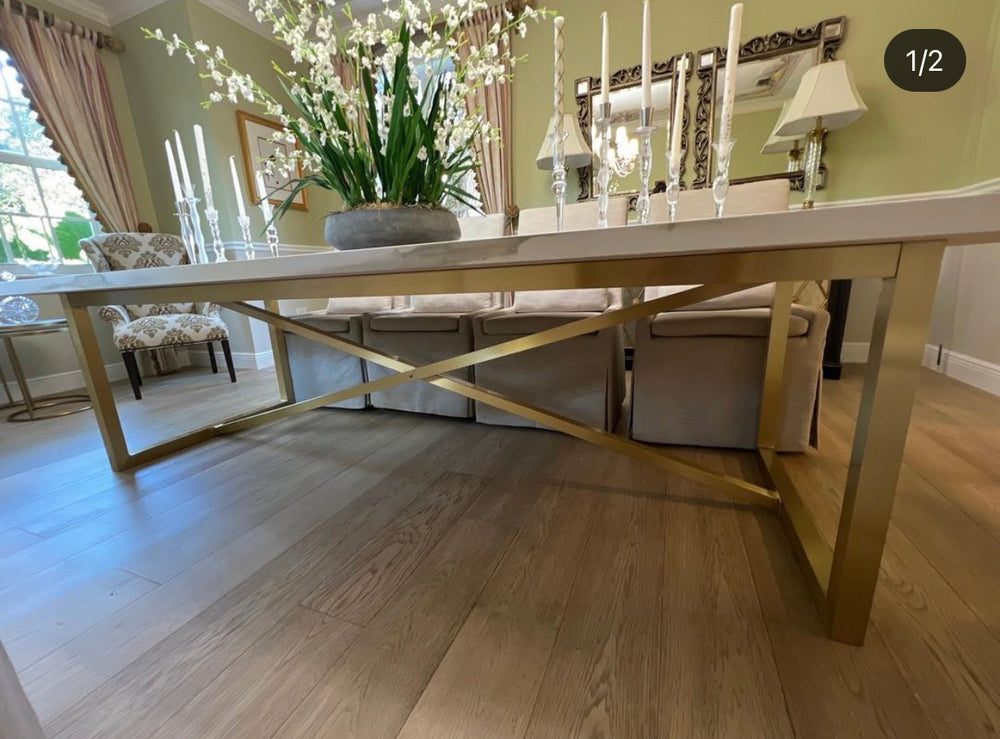Upgrade Your Furniture with Custom Dining Room Table Legs
Upgrade Your Furniture with Custom Dining Room Table Legs
Blog Article
From Conventional to Modern: Find the Perfect Dining-room Table Legs for Your Design
While traditional layouts such as cabriole and turned legs stimulate a feeling of timeless sophistication, contemporary designs like barrette and geometric options present a possibility for striking aesthetic passion. As you consider these aspects, the inquiry stays: exactly how can you seamlessly incorporate these diverse leg designs to create an unified dining experience?
Recognizing Table Leg Styles
The range of dining-room table leg designs can considerably affect both the looks and functionality of the space. Each leg design adds one-of-a-kind sensible functions and aesthetic components, dealing with diverse design choices and usage requirements. Recognizing these designs is essential for selecting the right table that lines up with your overall interior decoration vision.
As an example, conical legs use a clean, traditional appearance that can enhance a space's elegance, while stand bases offer stability and optimize legroom, making them perfect for smaller sized spaces. Barrette legs, a trademark of mid-century modern-day design, present an industrial style, enabling for a ventilated, open feeling. Trestle legs evoke rustic appeal, giving durable support and a sense of timelessness.
Wood legs can bring warmth and structure, whereas metal alternatives typically convey a streamlined, modern vibe. Eventually, recognizing table leg designs is vital for developing a cohesive eating location that mirrors individual design while ensuring functionality and convenience.
Conventional Table Leg Options
When picking dining space table legs, standard alternatives frequently personify classic beauty and craftsmanship. These styles reflect a rich heritage and a commitment to high quality, making them excellent for those who appreciate timeless aesthetic appeals.
Among the most iconic conventional leg designs is the cabriole leg, defined by its stylish rounded shape. This layout commonly includes decorative makings and is most typically discovered in Queen Anne and Chippendale furniture. One more preferred choice is the transformed leg, which boasts a collection of smooth, rounded shapes that supply a traditional appearance while maintaining stability.
Moreover, the straight leg, while easy, uses a unadorned and sturdy structure that can blend effortlessly with a range of tabletop styles. For those attracted to ornate describing, claw-and-ball feet legs stimulate a sense of splendour and can offer as a spectacular focal factor in any dining area.
Lastly, stand bases, although not purely legs, give an alternative traditional alternative that permits sufficient legroom and can be beautifully sculpted. Each of these typical leg designs adds to the overall ambiance of a dining-room, marrying feature with aesthetic charm.

Modern Table Leg Layouts
Modern table leg styles use a diverse variety of designs that stress innovative materials and clean lines. These layouts commonly focus on functionality while offering as striking centerpieces within an eating area. Minimal aesthetics prevail, with legs crafted from products such as steel, glass, and engineered timber, which contribute to a contemporary and ventilated feeling.
One popular style is the hairpin leg, defined by its slender, conical structure that offers stability without overwhelming the tabletop (dining room table legs). This style is commonly located in mid-century modern furnishings and can effortlessly complement various eating table shapes. One more trend is making use of geometric shapes, where legs might tackle angular or unbalanced types, including aesthetic interest and a touch of creativity

Blending Styles for Distinct Spaces
Commonly, house owners seek to develop unique dining rooms that show their individual design by blending numerous layout components. This technique permits for the consolidation of diverse aesthetics, resulting in a harmonious yet unique setting. As an example, combining a rustic wooden table with streamlined, modern-day steel legs can develop a captivating contrast that boosts the area's general allure.
Additionally, incorporating vintage table legs with modern tabletops can stimulate a sense of background while keeping a modern-day sensibility. Such mixes not only showcase private preference but likewise encourage imagination, allowing homeowners to Go Here curate a room that really feels both personal and welcoming.
Shade plays a critical duty in this blending procedure; picking table legs that match or contrast with the existing color scheme can enhance aesthetic passion. For instance, whitewashed legs can soften the daring of a dark table surface, creating a balanced visual.
Tips for Picking the Right Legs
Selecting the right table legs is important for achieving both capability and aesthetic appeal in your eating area. like it Begin by taking into consideration the general style of your space. Standard setups benefit from legs that feature elaborate makings or turned designs, while modern spaces may ask for streamlined, minimal styles.
Next, analyze the height and security of the legs. dining room table legs. Conventional dining tables range in between 28 to 30 inches in height, so guarantee the legs enhance this measurement for convenience. Additionally, durable materials, such as wood or metal, can enhance stability and longevity
Review the leg form also-- choices consist of right, tapered, or stand designs. Straight legs use a traditional look, while conical legs can include a touch of elegance. Pedestal bases provide ample legroom and are ideal for smaller rooms.
Final Thought
In recap, picking the suitable dining area table legs needs mindful factor to consider of both modern-day and traditional designs. By integrating leg design, elevation, and material with the overall décor, a cohesive and inviting environment can be achieved.
The selection of eating space table leg styles can significantly affect both the like it visual appeals and capability of the area. Eventually, comprehending table leg designs is important for creating a natural dining area that reflects individual design while guaranteeing usefulness and convenience.One of the most iconic conventional leg designs is the cabriole leg, identified by its stylish bent form. Straight legs offer a timeless look, while conical legs can include a touch of elegance.In recap, picking the excellent dining space table legs calls for mindful factor to consider of both contemporary and standard designs.
Report this page